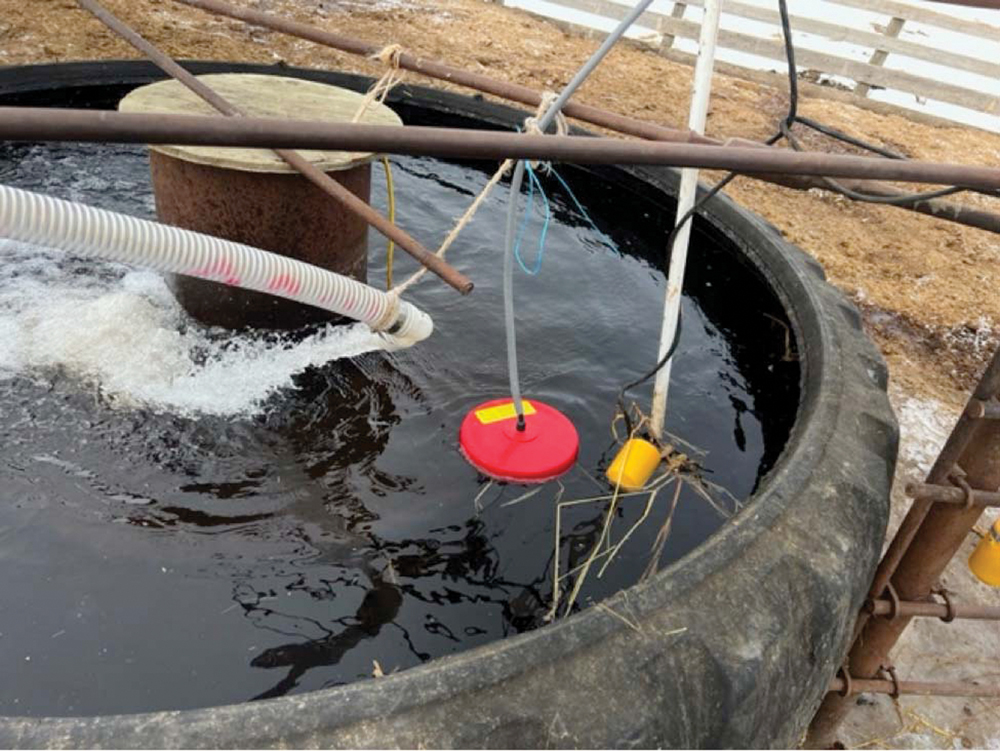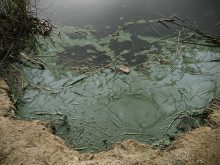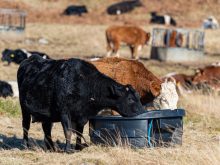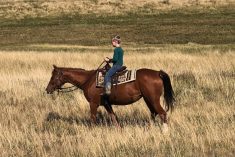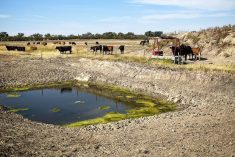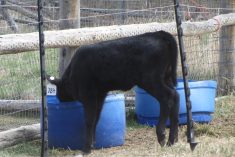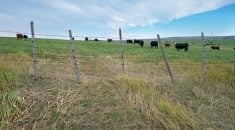I thought it might be interesting to share a winter watering system we put in place on our farm. It was designed to replace an existing waterline-fed trough, add capacity and provide some bulletproofing to our winter setup. One of the challenges at our ranch is that our numbers fluctuate a lot in the winter, depending on our grazing schedule, and most troughs require a minimum number of head to create enough flow to prevent freezing. A trough that may stay open with 100 head drinking may sometime see two only saddle horses, or may be required to provide water for 600 head. This challenge has meant a lot of practice in thawing water systems.
To develop our system, we first dug a 16-foot hole with a track hoe. We then stacked large mining tires in the hole and sealed between them with a can of expanding spray foam. It doesn’t take a lot of foam to seal between the tires. They were stacked with the track hoe, as it was a bit of a reach — each tire weighs around 4,500 pounds. Then we filled the bottom of the column with cement to seal it. Our ground is very hard clay so we could have probably gotten away without the cement. With lighter ground, the tires may shift, so a culvert might be preferred.
We cut a hole through the tires about eight feet underground so the existing well-fed waterline could come into the pit and fill it. The same concept applies to a wet well off a dugout, but in our case we had a pressure-fed line.
Read Also

Harvest wraps up and fall work begins
At the Eppich famly ranch in western Saskatchewan, the fall harvest was successful with few breakdowns, cows and calves have been sorted and a new tractor has arrived
On the end of the waterline, we installed a brass backflow prevention valve to prevent contamination of the well supplying water to the pit and then attached a Watson float valve to the end of the line. The length of the chain on the float valve produces about a 12-foot column of water in the bottom of the tires. This creates storage of roughly 10,000 gallons. The top of the water column is about eight feet below the top of the tire column, protecting the water from freezing.
Into the tire well, we dropped a ¾ horsepower cast iron septic pump ($250) with quick couplers tied to a 1 ¼” water line. The pump delivers around 5,800 gallons per hour. The water line runs overhead in a large arc to a rubber tire trough where the cattle drink. This pump is tied into a “reverse float” or “pump up” switch that sits in the trough.
It is important that the water line does not have any sags or dips so that the water drains back into the trough and the pit when it stops pumping. We have put a piece of sucker rod on the rise and taped the hose to it to prevent sagging. If you have dips in the line, water will sit there and freeze (learned this the first year) instead of draining back properly. We stacked the tires in the pit so they came about two feet above ground. We have put a secure cover on top of the tires. We will also install a steel safety fence around it, now that the backfill has settled.
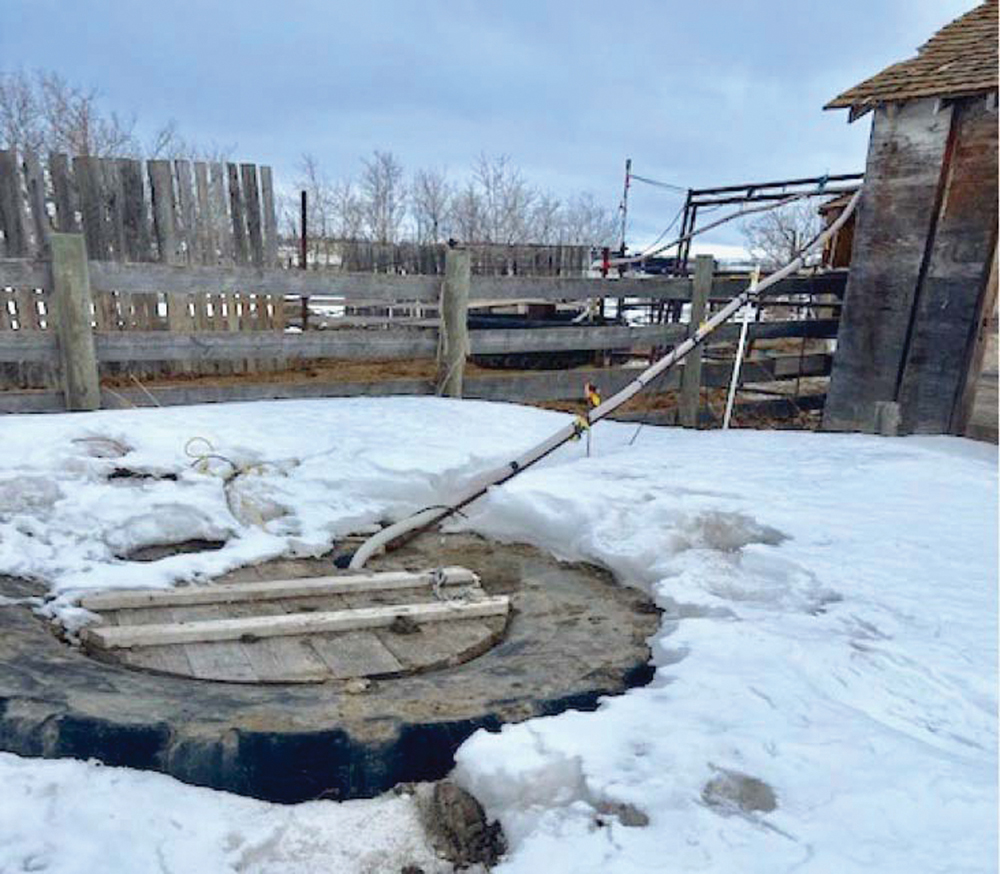
Backup components
We keep a spare switch and a spare pump with quick couplers attached. If a pump quits we can change it in about five minutes. If there is an extended power outage, we can attach a small generator and pump the trough full in about five minutes. The trough does not freeze, even with few animals using it, and can quickly deliver enough for several hundred head.
The worst-case scenario is the reverse float in the trough might freeze, allowing the cows to drink the trough dry. Previously, with the underground line direct to the trough, the water inlet was exposed and could freeze solid, so we had to thaw things out. Now we just knock the float loose from the ice and the trough is full in about five minutes.
The tire reservoir has the potential to feed our solar pumping systems and we may replace the 120V pump with an existing solar setup and insulated trough. In the summer we will look at using a jet pump to feed a pasture pipeline system from the tire reservoir.
Total cost included the track hoe work, the float, backflow preventer, pump, hose, pump-up switch, some bags of Quickcrete and two cans of spray foam. The tires were free. The system has been a massive improvement and we plan to convert some other troughs to the same setup.
If you have interesting water setups, please feel free to contact me and share them with other producers.
